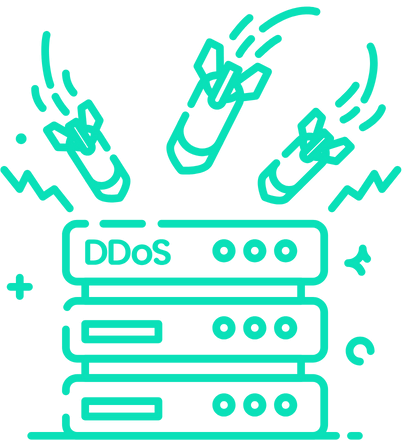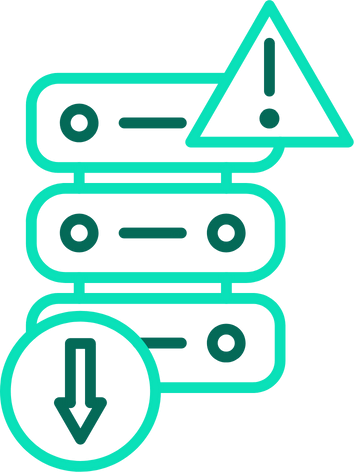IP rate limiting is a pivotal business mechanism that moderates request volumes from each IP address to a server, crucial for any business aiming to guard itself against attacks, and a crucial concept to understand for any proxy user.
This guide sheds light on the nuances of IP rate limiting, its role in safeguarding servers against abuse, and how to tactically approach it for unhindered online activity. Whether for web scraping or API management, a clear grasp of IP rate limiting can save you time and resources.
Table of Contents
How IP Rate Limiting Works
IP rate limiting is a fundamental tool used by many online services to maintain system health and ensure equitable access. It functions by tracking the number of requests that come from individual IP addresses over a specific period of time, providing a straightforward yet powerful means to control the load on a server. Here’s a closer look at how this process unfolds:
1. Identification of Traffic Sources
Each device connected to the internet has a unique IP address, which acts as a source identifier. When a device makes a request to a server, its IP address is logged, allowing the server to track where requests originate.
2. Tracking Requests Over Time
Systems monitor how many requests each IP address makes within a designated timeframe. This monitoring is crucial to detect unusual spikes in traffic that could indicate potential abuse or system stress.
3. Enforcement Upon Limit Exceedance
If the number of requests from a single IP address exceeds the established limit within the set time period, the server will automatically restrict further requests from that IP. This restriction can manifest as temporary blocking or throttling, where the server intentionally slows down the response times for the offending IP.
4. Common Time Periods and Request Limits:
The frequency and threshold of rate limits can vary widely depending on the server’s capacity and the nature of the service provided.
Common intervals include per minute, hour, or day limits, tailored to balance user needs and system capabilities.
For example, an API might allow 1000 requests per hour per IP, while a login endpoint might restrict attempts to 5 per minute to combat brute force attacks.
Understanding these mechanisms is essential not just for users who need to navigate these limits, such as proxy users, but also for businesses implementing rate limiting to protect their services.

What IP Rate Limiting Prevents
IP rate limiting is not just a tool for managing traffic flow; it serves as a vital security measure that helps safeguard online services against various forms of cyber threats and misuse. This protective strategy is particularly effective in preventing:
1. Denial of Service (DoS) and Distributed DoS (DDoS) Attacks
These attacks flood a server with overwhelming amounts of traffic to incapacitate it, denying service to legitimate users. Rate limiting can mitigate these attacks by capping the number of requests any single IP can make, thus protecting the bandwidth and resources.
2. Brute Force Attacks
In brute force attacks, attackers try numerous combinations to guess login credentials. Rate limiting restricts the number of login attempts an IP can make within a certain period, which helps prevent unauthorized access. This mechanism is crucial for platforms like Ticketmaster, where account security is paramount.
3. Excessive Web Scraping/Data Extraction
While collecting data from websites is a common practice, excessive scraping can severely impact website performance. Rate limiting ensures that data extraction activities do not compromise the usability of the website, a consideration important for those using proxies for gathering market data or insights.
4. Excessive API Usage
APIs are critical for the functioning of modern web applications, but they can be exploited for data theft or service disruption. Rate limiting helps maintain API availability and functionality by preventing the abuse of these interfaces. This is especially relevant for businesses that rely on high API demands and need to maintain service continuity.
5. Inventory Hoarding
This practice involves buying up large quantities of limited-edition products, such as buying concert tickets in bulk or copping exclusive sneakers, to resell at higher prices. Rate limiting can prevent automated bots from buying out inventory, ensuring fair access for all customers.

IP Rate Limiting Algorithms
IP rate limiting can be implemented using various algorithms, each with its own method of controlling traffic. Here’s a breakdown of three common algorithms and their pros and cons:
1. Fixed Window
This algorithm divides time into fixed intervals (windows) and allows a set number of requests in each window. Once the limit is reached, no more requests are allowed until the next window begins.
- Pros: Simple to implement and understand. It provides a clear limit on how many requests can be handled in each time period.
- Cons: Can lead to burst traffic at the boundary of the time windows, as users try to send requests right after the reset, potentially causing spikes in traffic and uneven load distribution.
2. Leaky Bucket
This algorithm visualizes a fixed capacity bucket where incoming requests slowly “leak out” at a continuous rate. If the bucket overflows (i.e., incoming requests exceed the leak rate), new requests are discarded until space becomes available.
- Pros: Smoothens burst traffic into a steady output rate, providing more uniform handling of requests and reducing the chance of server overload.
- Cons: Can delay processing during low traffic, as the leak rate remains constant, not adapting to actual incoming request volume.
3. Sliding Window
This is a variation of the fixed window that provides more flexibility. It combines the fixed window approach with a rolling log of timestamped requests to better distribute limit enforcement across window transitions.
- Pros: Reduces the burstiness and unfairness issues seen in fixed windows by allowing limits to be enforced more evenly over time.
- Cons: More complex to implement and requires more computation and memory to maintain the rolling log of requests.

Examples Of Businesses Who Use IP Rate Limiting
IP rate limiting is a critical strategy across various industries to ensure the security and efficiency of their online services. Here are examples of businesses that implement IP rate limiting and the reasons why:
1. E-Commerce Platforms
- Example: Amazon, eBay and Shopify
- Reason for Rate Limiting: These platforms use IP rate limiting to manage the load on their servers from high traffic and to prevent automated bots from scraping content, hoarding inventory, or conducting price scraping. This ensures a fair purchasing environment and protects against service disruptions during high-demand periods.
2. Financial Institutions
- Example: Bank of America and PayPal
- Reason for Rate Limiting: Financial institutions implement IP rate limiting to secure their customer’s accounts and sensitive transaction data. It prevents brute force attacks aimed at cracking user passwords and protects against DDoS attacks that could jeopardize the availability of critical banking services.
3. Social Media Platforms
- Example: Facebook, Instagram, LinkedIn and Twitter
- Reason for IP Rate Limiting: Social media networks apply rate limiting to prevent spamming activities and abuse of their platforms, such as automated posting, fake YouTube views, fake subscribers or behavior that could degrade the user experience. It also helps in managing the data flow from APIs that fetch user-generated content, ensuring platform stability and responsiveness.
4. Cloud Service Providers
- Example: Microsoft Azure and Google Cloud
- Reason for Rate Limiting: Cloud providers use rate limiting to maintain service continuity and protect against DDoS attacks. It ensures that no single customer can overuse resources, which is essential for maintaining the performance and availability of shared resources across their vast user base.
5. Streaming Services
- Example: Netflix, and Hulu
- Reason for IP Rate Limiting: Streaming platforms implement IP rate limiting to manage simultaneous login attempts and content streaming requests, ensuring that their services can support a large number of users without degradation of service quality. This is also crucial for preventing account sharing or piracy.
Related: How To Unblock Spotify At School
6. Gaming Platforms
- Example: Xbox Live, Roblox, Steam, Silkroad and PlayStation Network
- Reason for IP Rate Limiting: These gaming services use IP rate limiting to prevent cheating and to ensure fair play by limiting the number of times a user can attempt to connect or execute actions within a game. It also protects the platforms against potential DDoS attacks during major game releases or online events.
How To Bypass IP Rate Limits With Proxies?
Avoiding IP rate limits often requires using proxies. Different proxy types offer varying advantages:
- Rotating Residential Proxies: These use residential IPs that constantly rotate, mimicking real user behavior. This makes it hard for servers like Amazon, Twitter, or travel booking sites to track and block requests. Example: V6proxies residential proxy solutions.
- Data Center Proxies: Sourced from data centers, these DC IPs are fast but static and easily identified as proxies. They are useful for high-speed tasks but risky for bypassing strict rate limits.
Effective proxy management is key:
- Monitor usage to rotate IPs before hitting limits. E.g. Scraping Indeed.com jobs with 50 requests/minute from the same IP will get blocked.
- Automatically rotate IPs at set intervals matching target rate limits. E.g. Switch IPs every 5 minutes when scraping Yelp reviews.
- Maintain logs to troubleshoot issues and comply with policies. E.g. Showing audit trails for ethical web harvesting.
For related practices that also aim to maintain a healthy server reputation and avoid triggering security protocols, learn about the process of IP warm-up and its significance in email marketing campaigns.
IP Rate Limiting Best Practices (For Business Employing It)
- Multi-Layered Defense: Rate limiting alone is ineffective against sophisticated bots and attackers. Combine it with other techniques like CAPTCHAs, JavaScript challenges, browser fingerprinting, and machine learning. Example: Cloudflare’s Bot Management suite.
- Continuous Monitoring & Adjustments: Analyze traffic patterns and user journeys to set appropriate rate limits. Too lax and you’re vulnerable, too strict and you risk blocking legitimate customers. Example: Amazon closely watches metrics like order velocity to detect anomalies.
- Using Rate Limiting Services/Solutions: Managing rate limiting in-house is complex and resource-intensive. Use a rate limiting service/solution to simplify implementation and automate enforcement across your infrastructure. Example: Google Cloud Armor policies to protect web apps and APIs.
- Dynamic Rate Limiting: Increase adaptability by making limits dynamic based on signals like user reputation, geographic location, payload size etc. This precision targeting reduces false positives. Example: Akamai Bot Manager using multi-dimensional rate limiting.
FAQs On Rate Limiting
To ensure you have a well-rounded understanding of the topic, we’ve compiled a list of frequently asked questions that delve deeper into certain aspects of the rate limiting.
1. How long does rate limit last?
The duration of a rate limit depends on the specific policies set by the service provider. It could range from a minute to an hour, or even longer.
2. Is rate limiting the same as throttling?
No, rate limiting and throttling serve different functions. Rate limiting restricts the number of requests a user can make in a set time period, useful for preventing system overload. Throttling, however, limits the speed of data transmission, helpful for managing bandwidth and user experience. Knowing the difference is key for users navigating system constraints.
3. How do you avoid rate limiting?
To avoid rate limiting, ensure that you’re making requests at a rate below the limit set by the server, or use methods like spreading requests over multiple IP addresses with the help of proxies.
4. How do you bypass the IP rate limit?
Bypassing IP rate limits can be achieved by using proxies to distribute the load of requests across several IP addresses, making it less likely for any one IP to hit the limit.
5. What is TCP IP rate limiting?
TCP IP rate limiting refers to the control of the number of Transmission Control Protocol (TCP) connections an IP can initiate within a certain period, often used to protect against network-level abuses.
6. What is the difference between bot management and rate limiting?
Bot management is a comprehensive strategy to identify and manage the activity of automated bots, ensuring that only legitimate traffic interacts with online services. It involves differentiating between harmful and harmless bots, and determining the appropriate response to each.
Rate limiting, on the other hand, is a specific technique that places a cap on the number of requests an IP address can make in a certain period, regardless of whether the traffic is from a bot or a human.
While both are used to protect websites and services, bot management focuses on the nature of traffic, while rate limiting focuses on the quantity of traffic.
7. How does rate limiting work with user logins?
Rate limiting on user logins restricts the number of login attempts from a single IP address over a specified period. This measure helps prevent brute force attacks by blocking or delaying further attempts after too many failed login tries.
8. Why is rate limiting not enough for DDoS protection?
Rate limiting isn’t fully effective against DDoS attacks because these attacks often distribute traffic across many IPs, diluting the impact of rate limits on any single IP. Large-scale DDoS attacks can generate traffic volumes that overwhelm servers even when rate limits are in place. Comprehensive DDoS protection requires a multi-layered approach including traffic analysis, behavior profiling, and anomaly detection to identify and mitigate these distributed threats.
Related articles:
Buy RDP with Residential IPs [Starting From $30]
- Tags:
- web scraping



